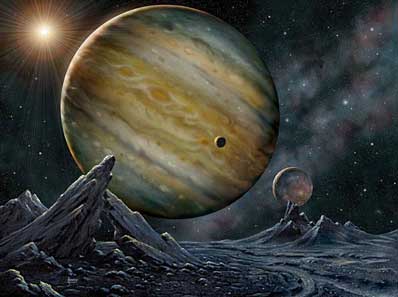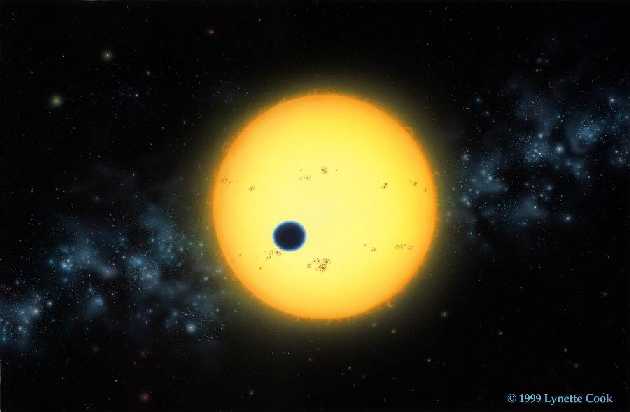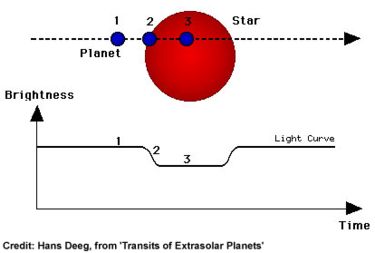

Exoplanet Science
The extra-solar planet revolution
The main goals of extra-solar planet research, and that of astrobiology in general, are to understand the place of the solar system and in particular the Earth in the universe. How common are extra-solar planets and planetary systems like our own solar system? How often do stars have rocky Earth-like planets? What fraction of stars have planets in the habitable zone (with a planet at such distance that their surface temperature allows liquid water)? And the ultimate question, how common is it for these Earth-like planets to harbour life...?
Direct detections of extra-solar planets are highly challenging due to the enormous star-to-planet brightness contrasts, and so far have been beyond reach. However, indirect methods, in particular the radial velocity technique which measures the reflex motion of a star about the star-planet barycentre, have resulted in a genuine revolution in exoplanet research. It has led to the first discovery of exoplanets to the more than 150 systems known to date. The planetary systems discovered so far have already resulted in several major surprises. The first planets found were all so-called 'hot Jupiters', planets with orbital periods of only a few days (well within the orbit of Mercury on solar system scale), something thought to be impossible from planetary formation theories. In addition, the large majority of the systems subsequently discovered have orbits with eccentricities much higher than common in our own solar system. Also, apparently, planets are more likely to form in a metal-rich environment, with statistical studies showing that on average those stars hosting planets have a significantly higher metal content than the average solar-type stars in the solar neighbourhood.

|

| |
| Copyright © 1998-2012 Lynette R. Cook, All Rights Reserved |
Transiting Exoplanets
Although the radial velocity technique has been a great success, it also has its limitations. The orbital parameters of the systems are determined exactly, but almost nothing is being learned about the planets themselves. The amplitude of the radial velocity signal only provides a lower limit to the planet's mass, because the inclinations of the orbits are unknown, and no further measurements of the fundamental parameters are possible until technologies have advanced to allow the planets to be detected directly. This situation is very different in the rare case that the orbit of the planet has an inclination such that it transits its host star, as in the case of HD209458b. Not only are the precise orbital parameters of this planet determined, but also the planet's mass, radius, and density. High precision follow-up observations have lead to several observational milestones, such as the first detection of a planet's atmosphere, and detection of direct thermal emission using the secondary eclipse.
The Transit Technique
At the moment, transits are -the- way to learn more about the extrasolar planet population. Mid-2005, there are 8 transiting planets known. The main challenge for using this technique is that the probably for a planet to transit its host star (as seen from the Earth) is small, typically less than 1% for planets in Earth-size orbits. Furthermore, such a transit would occur only once a year, lasting in the order of only several hours. Luckily, hot Jupiters have much shorter periods, and also have a significantly higher probability (~10-15%) to transit their star.
The way a transit survey works is that large, densely populated areas of sky are monitored for many nights, producing light curves for the thousands of stars in the field. Periodic dips in the light curves of some stars reveal the candidate transiting planets. Spectroscopic follow-up is than needed to distinguish the genuine planets from transit mimics, caused by e.g. blended eclipsing binary stars or grazing eclipses. The most successful transit survey to date is the OGLE-III survey, which has so far (mid-2005) yielded 5 transiting planets. The camera+telescope combination used by OmegaTranS is more than an order of magnitude more powerful than that used by OGLE-III.


